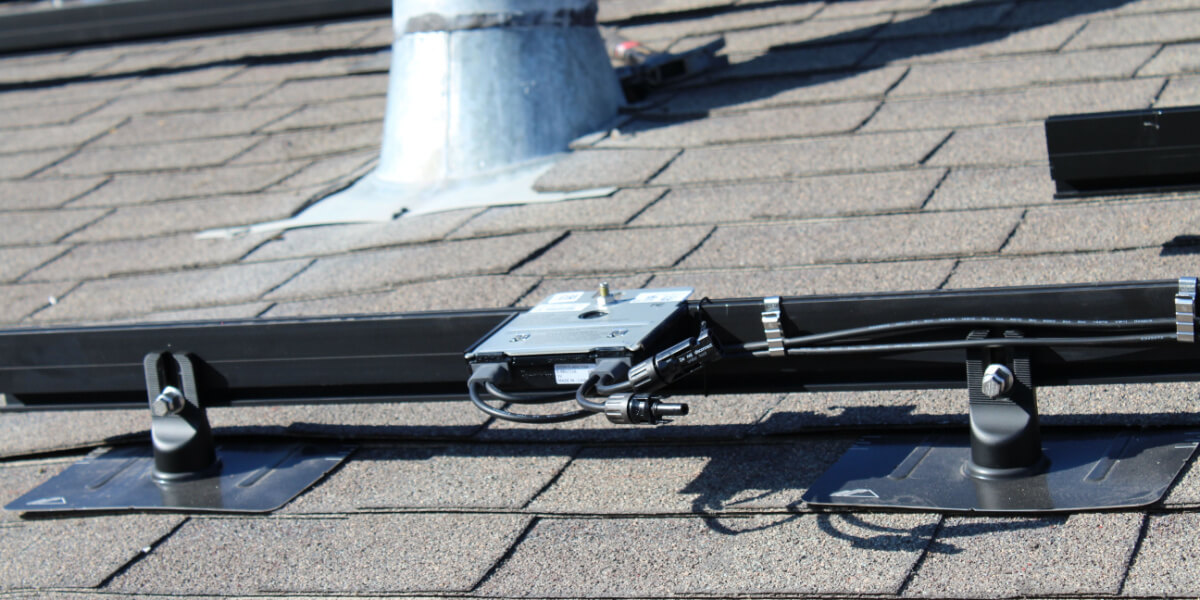KEY POINTS
- A solar optimiser can be added to individual solar panels to maximise their power output.
- Investing in solar panel optimisers can help boost your solar system’s efficiency and prolong the life of your panels.
- Solar optimisers can cost from $500 to $2,500, and must be installed by a licensed technician.
If you have solar panels installed on your roof, you’re already reaping the benefits of solar power with lower energy bills and reduced reliance on grid electricity. But what if you want to gain even more energy and savings from your solar system?
That’s where solar optimisers come in. Solar panel optimisers are an increasingly popular add-on for many homeowners with a solar power system. In this guide, you’ll learn what these devices are, how they work and much more. Keep reading or skip ahead by clicking on any of the sections below.
On this page:
Advertisement
What are solar optimisers?
Solar optimisers are a type of device that’s added to individual solar panels to increase their power output. Otherwise known as module level power electronics , these devices can be attached to the ‘string’ of a standard panel, a component that connects a series or set of solar panels.
A solar panel optimiser contains several electronic components that work together to regulate the flow of current from the string of panels to the inverter, ensuring that each panel operates at peak efficiency. What’s more, these devices help improve the reliability of your solar system, particularly if one panel is not getting enough sunlight or is otherwise not performing at peak efficiency.
How do solar panel optimisers work?
Solar optimisers are a type of module that can be added to individual panels to increase the overall efficiency of a PV system. These devices work by using a technology called Maximum Power Point Tracking (MPPT). This solar technology tracks how much energy each panel produces at any given time and adjusts the voltage accordingly before sending it to the solar inverter.
Types of solar panel optimisers
In Australia, there are four types of optimisers for solar panels, each with different functions and price points. It’s important to note that each type will add an extra cost to a solar system installation.
- Discrete DC optimisers: These devices are attached to each solar panel in a string, which is attached to the inverter. Discrete DC optimisers offer benefits over conventional systems that use a single central inverter, including improved overall efficiency, better panel-level monitoring and increased flexibility.
- Smart panels: Otherwise known as integrated DC optimisers, a smart panel has a DC optimiser already built into it. Most smart panels come at a higher price point and are only available through specific solar panel manufacturers, such as Canadian Solar and Jinko Solar.
- Maxim panels: Maxim panels have three small optimisers attached to one string of cells. This helps reduce the effect of shading on a panel and strengthen any weaker cells that may be causing the system’s efficiency to lag.
- Microinverters: A microinverter is a compact inverter that’s attached to individual solar panels in a string, making them capable of measuring the production of each panel within a system. These are generally considered to be one of the more expensive options.
Solar panel optimiser costs
Solar panel optimisers are a great way to increase a system’s power output but they can be pricey. Panel optimisers can cost anywhere from $500 to $2,500, depending on the brand, type, size and features. Due to the additional perks of increasing panel efficiency, solar optimisers typically pay for themselves while also expanding the lifespan of the panels.
Your preferred installer should be able to give you an accurate price for your solar system installation. Luckily, there are loads of companies Australia-wide that can provide free quotes specific to your circumstances, including the installation of solar optimisers. That’s why it’s best to shop around and explore your options before settling on a particular installer.
Compare solar energy plans
If you’re considering a solar optimiser, you might also want to compare solar energy plans for a better deal.
Here are some of the cheapest solar-specific deals from the retailers on our database. These costs are based on the Ausgrid network in Sydney but prices will vary depending on your circumstances. We show one product per retailer, listed in order of lowest price first. Annual price estimates assume general energy usage of 3900kWh/year for a residential customer on a single rate tariff. Price estimates exclude solar feed-in tariff credits. These are products from referral partners†. Our database may not cover all deals in your area, and please check retailer websites for up to date information.
Here are some of the cheapest solar-specific deals from the retailers on our database. These costs are based on the Citipower network in Melbourne but prices will vary depending on your circumstances. We show one product per retailer, listed in order of lowest price first. Annual price estimates assume general energy usage of 4000kWh/year for a residential customer on a single rate tariff. Price estimates exclude solar feed-in tariff credits. These are products from referral partners†. Our database may not cover all deals in your area, and please check retailer websites for up to date information.
Here are some of the cheapest solar-specific deals from the retailers on our database. These costs are based on the Energex network in Brisbane but prices will vary depending on your circumstances. We show one product per retailer, listed in order of lowest price first. Annual price estimates assume general energy usage of 4600kWh/year for a residential customer on a single rate tariff. Price estimates exclude solar feed-in tariff credits. These are products from referral partners†. Our database may not cover all deals in your area, and please check retailer websites for up to date information.
Here are some of the cheapest solar-specific deals from the retailers on our database. These costs are based on SA Power network in Adelaide but prices will vary depending on your circumstances. We show one product per retailer, listed in order of lowest price first. Annual price estimates assume general energy usage of 4000kWh/year for a residential customer on a single rate tariff. Price estimates exclude solar feed-in tariff credits. These are products from referral partners†. Our database may not cover all deals in your area, and please check retailer websites for up to date information.
Who can install solar optimisers?
Like the installation of solar panels, any moderations to your system will need to be carried out by a licensed and Clean Energy Council (CEC) accredited technician. Fitting optimisers for solar panels requires a lot of electrical work, including re-wiring the modules to the panels and inverter. In short, installing these devices is not a simple DIY project!
Thankfully, there are many CEC-certified electricians around Australia who can help with the proper (and safe) installation of solar optimisers.
5 key considerations before purchasing solar optimisers
If you’re looking to purchase or upgrade your home with solar panel optimisers, there are a few things to consider first. Solar optimisers come with a variety of features and may be better suited to one house than the other. Here are five key considerations every homeowner should know about:
- Panel and roof positioning: If any of the panels on your roof are obstructed by shade or other objects that reduce the amount of sunlight they receive, optimisers may be an ideal choice to ensure you’re getting the most out of your PV system.
- Optimising efficiency: If you want to drive your solar system further, dialling up its efficiency is one way to keep your energy bills low.
- Monitoring capabilities: If you’re a savvy solar enthusiast who wants to monitor your solar panel system’s performance down to the efficiency of individual panels, optimisers can help.
- Sticking to a budget: If you’ve made up your mind about solar optimisation, do your research on the make, model, types and manufacturers.
- Safety is paramount: If safety is high on the priority list, think about choosing a solar optimiser that has rapid shutdown capabilities, in the event any components of your panels are faulty.
You might also be interested in:
Are solar optimisers worth it?
Investing in solar panel optimisers is all about weighing up what’s most important to you. Do you want to increase the efficiency of your solar system? Are you keen to reduce your electricity bills while lowering your carbon footprint? Let’s not forget that solar optimisers can also prolong the life of your panels, making them a sound investment for homeowners who intend to stay in the property long-term.
There are many benefits to installing solar optimisers, but there are also many factors to ponder before taking the plunge. Whether it’s cost and installation, compatibility, performance and durability, maintenance or warranty, you’ll need to do your homework.
That’s why it’s vital to contact a licensed installer and discuss whether solar optimisers are suitable for your circumstances.
Image credit: Solar Goat/Shutterstock.com, Pedro Turrini Neto/Shutterstock.com, Asurnipal/commons.wikimedia.org




Share this article